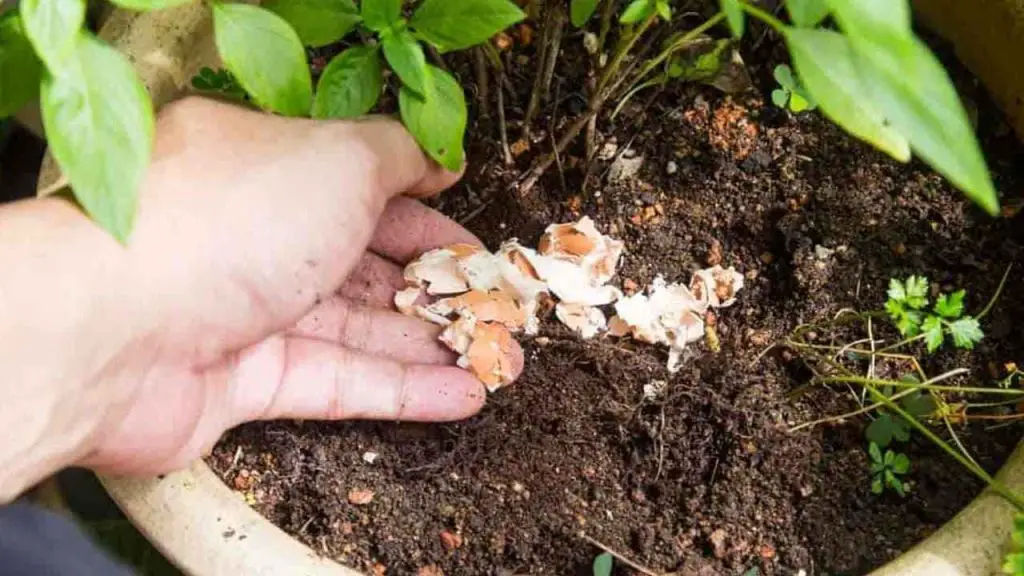Adding calcium to soil is a great way to improve the health of your plants and ensure good growth. In this guide, we’ll talk about how to add calcium to soil, as well as some tips for getting the most out of this essential nutrient. Keep reading for more information!
Why Do You Need To Add Calcium To The Soil?

As any gardener knows, calcium is an essential nutrient for plants. It helps to promote strong cell walls, prevent blossom end rot, and improve the uptake of other nutrients. However, calcium is not naturally found in most soils, so gardeners need to add it to the soil in order to ensure that their plants are getting enough.
There are a number of ways to add calcium to the soil. One option is to use limestone, which can be added either in powdered form or as pellets. Another option is to use gypsum, which is also available in powder or pellet form. Both limestone and gypsum are fairly inexpensive and can be found at most gardening stores.
Once you’ve chosen a calcium source, you’ll need to apply it to your soiL If you’re adding calcium in powder form, you can simply mix it into the top few inches of soil. If you’re using pellets, you’ll need to water them well so that they have a chance to dissolve.
Adding calcium to your soil is a simple way to ensure that your plants are getting the nutrients they need. By taking this simple step, you can help your plants stay healthy and thrive all season long.
Benefits Of Adding Calcium To Soil
Adding calcium to soil has a number of benefits for plants. For one, it can help to reduce the acidic levels in the soil, making it more hospitable for plants.
Additionally, calcium helps to improve drainage and aeration in the soil, both of which are important for plant growth.
Furthermore, calcium aids in the uptake of other nutrients by plant roots, and it also helps to prevent moisture loss from the soil. As a result, adding calcium to soil can have a positive impact on plant health.
Moreover, it can also help to increase yields and improve the quality of fruits and vegetables.
How To Add Calcium To Soil – Organic Or Inorganic Methods
Adding calcium to your soil is important for the overall health of your plants. Calcium helps to regulate soil pH, improve nutrient uptake, and prevent disease. It is especially important for crops that are prone to blossom end rot, such as tomatoes and peppers. While you can purchase commercial fertilizers that contain calcium, there are also several ways to add calcium to your soil organically.
Garden lime is one of the most common organic amendments for adding calcium to the soil. It is made from pulverized limestone, which is a natural source of calcium carbonate. You can find garden lime at most garden centers or online retailers.
Dolomitic lime is another type of limestone that also contains magnesium. It can be used in the same way as garden lime, but it is more expensive and not as widely available.
Shells from eggshells, oysters, and clams can also be used to add calcium to your soil. These shells are rich in calcium carbonate and will help to raise the pH of acidic soils.
Eggshells can be added whole or ground into a powder using a coffee grinder or food processor. Oyster and clam shells should be chopped into small pieces before being added to the soil.
To get the most benefit from these organic amendments, it is best to work them into the top few inches of soil before planting.
How Do You Know If Your Soil Has An Adequate Level Of Calcium Already?
Too much or too little calcium in the soil can have a range of negative consequences for plants, including stunted growth, blossom end rot, and poor fruit and root development. As a result, it is important to maintain a healthy level of calcium in the soil.
There are a few simple ways to test calcium levels. One is to take a sample of soil to a professional laboratory for testing.
Another is to use a home test kit, which can be purchased online or at a gardening store. These kits typically involve mixing a sample of soil with water and then adding a chemical indicator.
If the solution changes color, it indicates that the soil has an adequate level of calcium. Testing the pH level of the soil can also give clues about calcium levels; in most cases, soils with a pH below 7 lack calcium.
By testing the soil regularly, gardeners can ensure that their plants are getting the nutrients they need to thrive.
Which Plants Need The Most Calcium And Why?
All plants need calcium to some degree, but there are some plants that benefit from higher levels of calcium than others. For example, tomatoes and other fruits are particularly susceptible to blossom end rot, which is caused by a lack of calcium.
This problem can be prevented by adding calcium to the soil before planting or by applying a calcium-rich fertilizer during the growing season.
Peppers, potatoes, and carrots are also especially vulnerable to this disorder, so it is important to make sure they are getting enough calcium. In general, plants that are grown in warm climates or that produce a lot of fruit tend to need more calcium than other plants.
By providing your plants with the right amount of calcium, you can help them stay healthy and productive.
What Is The Best Time For Adding Calcium To Soil?
The best time for adding calcium to soil is in the fall. This is because calcium helps to neutralize the acids that are produced by decomposing leaves and other organic matter. By adding calcium to the soil in the fall, you can help to reduce the risk of winter injury to plants.
In addition, calcium can help to promote healthy root growth and improve drainage. As a result, adding calcium to your soil in the fall can have a number of benefits for your plants.
Additional Contents


